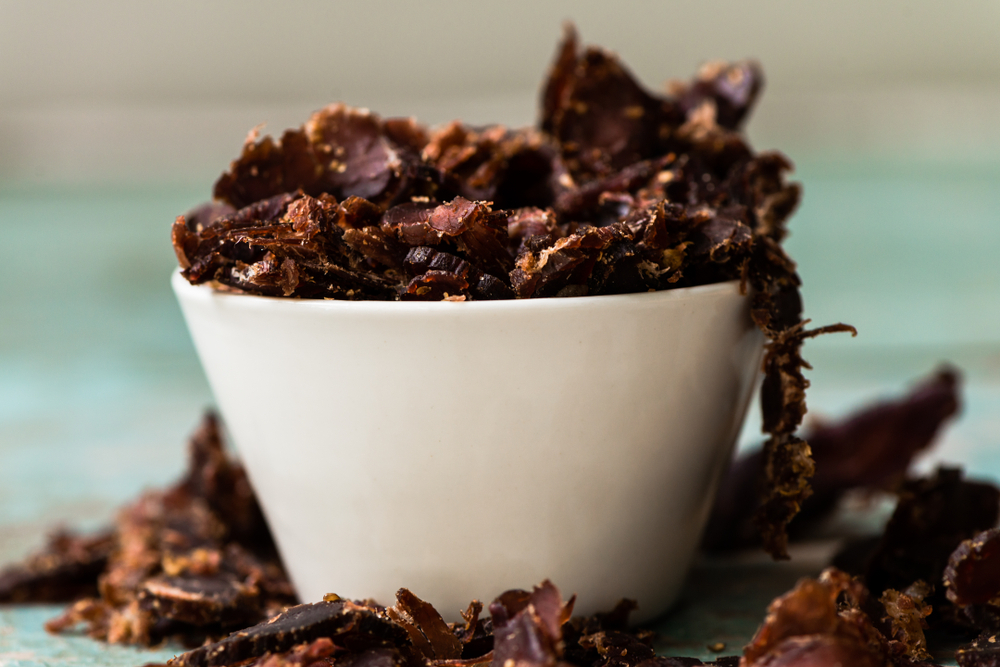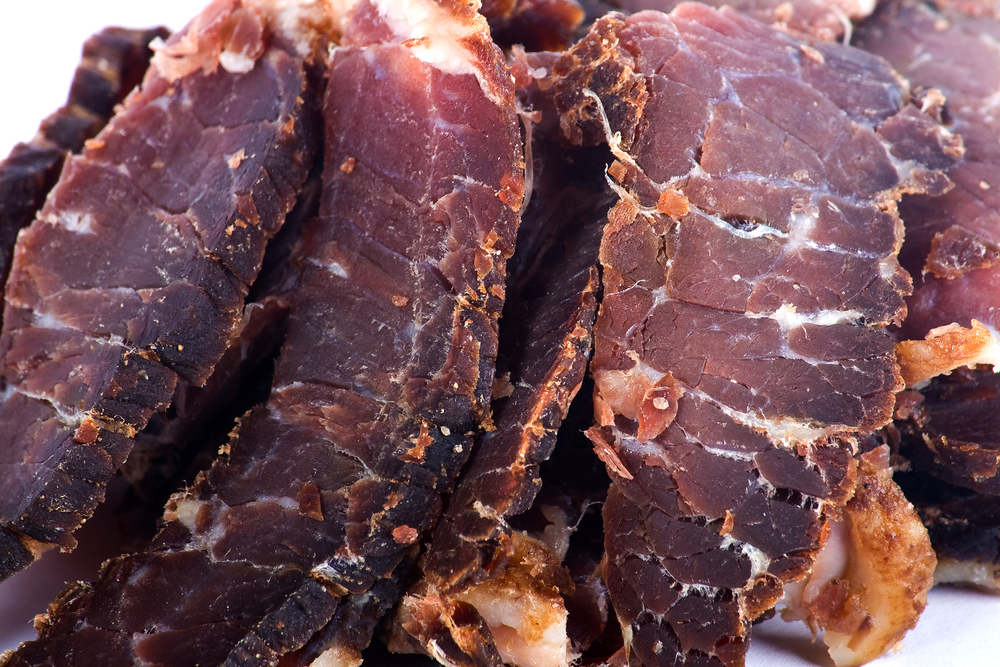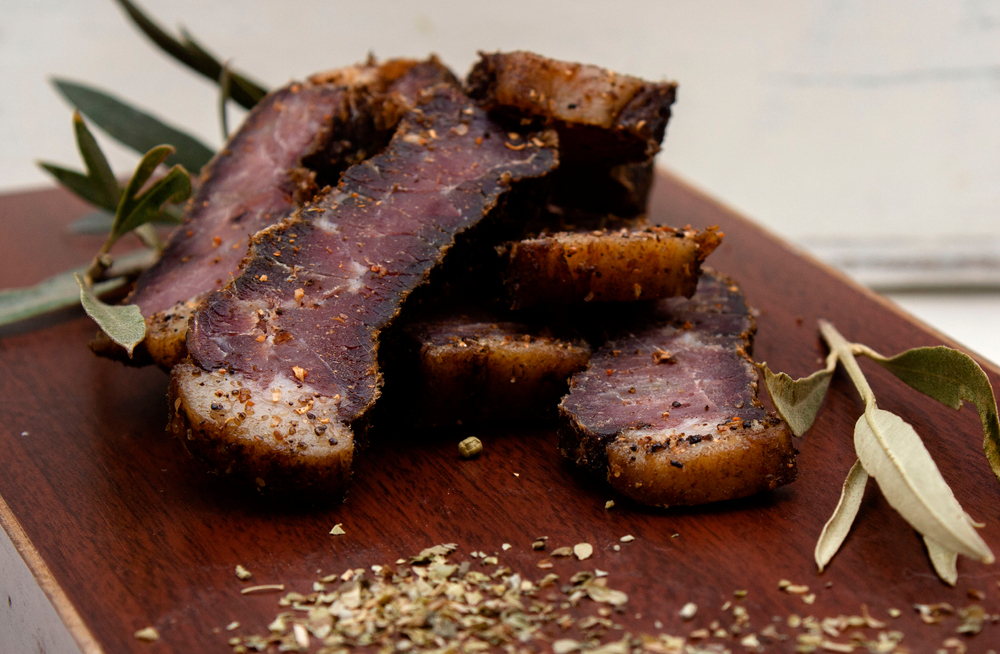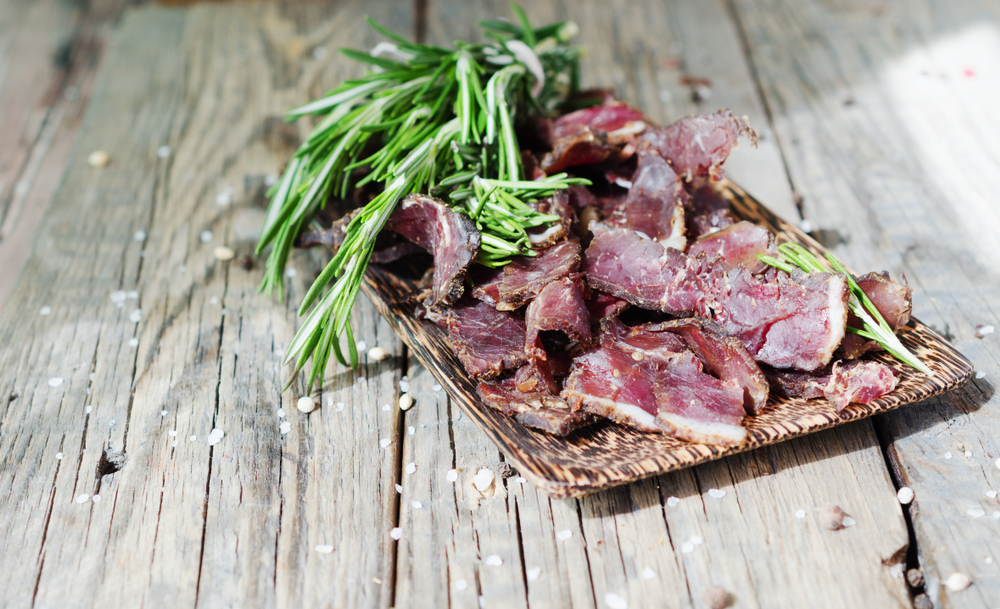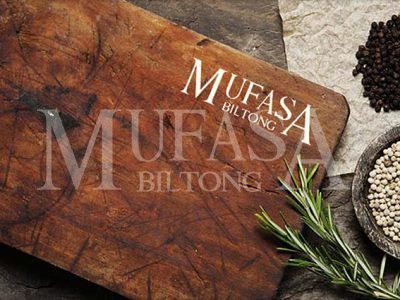Do you fancy trying out a new South African snack, biltong? Indeed, this nutrient-rich, satisfying dish will blow your mind.
Biltong is air dried, thinly sliced, cured meat that originated in Southern African countries like Botswana, South Africa and Zimbabwe. It is a little like beef jerky. Just like beef jerky, biltong was used to pep up exhausted travellers on long-distance journeys.
Southern Africans used to preserve their meat by curing it with a little bit of salt and hanging it up in a cold room. Then Europeans came along and altered the entire process. They brought spices, vinegar, pepper, coriander and cloves to the mix.
WHAT IS BILTONG?
When it comes to traditional biltong, we are talking about a whole range of cured and dried meats. South Africans have been mixing salt into the meat and hanging it up to air dry for decades. Recently, the rest of the world came to know about the dish and has modified the recipe.
What Meats are We Talking About?
Although biltong can be made from different meats, you will most often find beef on it. This is because beef is readily available in the market and inexpensive as well. However, biltong can also be made using fish (dried, salty bokkoms, and even shark), ostrich meat, sirloin of springbok or kudu. Believe it or not, you will love this snack.
What is the Difference Between Beef Jerky and Biltong?
Beef jerky and biltong may look similar, but they are worlds apart.
Beef jerky has been around for a while now. In fact, some people believe it dates back to an ancient Inca Tribe called the Quechua, who coined the term ‘charki’ (today it is known as ‘jerky’). Jerky means dried and salted meat.
Others think North Americans have discovered it. Since drying meat is one of the most ancient methods in the book for preserving food, it is no wonder we get confused when looking at their origins.
Typically, when we talk about beef jerky, we are looking at thin slices of lean beef, dried low and slow. Beef jerky can be prepared in different ways. Smoking, salting, and dehydrating are the most commonly known methods.
Why use the salt? Salt helps gently draw the moisture out and add flavour to the meat.
The ideal beef jerky has a tiny amount of fat because fat does not dry well and can turn rancid.
What is biltong?
Biltong is made with fewer preservatives and fewer artificial flavours. The best biltong makers stick to the age-old methods used in South Africa to prepare this stunning dish.
Traditional biltong is thicker than beef jerky. What sets biltong apart from beef jerky? It is all in the seasoning. The meat in biltong is coated in a unique, moreish spice mix, traditional rock salt, all-spice, ground coriander seeds, and black pepper. Vinegar is also added to the mix. Vinegar gives a distinct layer of flavour to the dried and cured meat, softening up the meat to give it that steak-like mouthfeel.
Mufasa Biltong is your one-stop destination for all sorts of dried meats you can get at an affordable price. Check out the site now www.mufasabiltong.com.au

